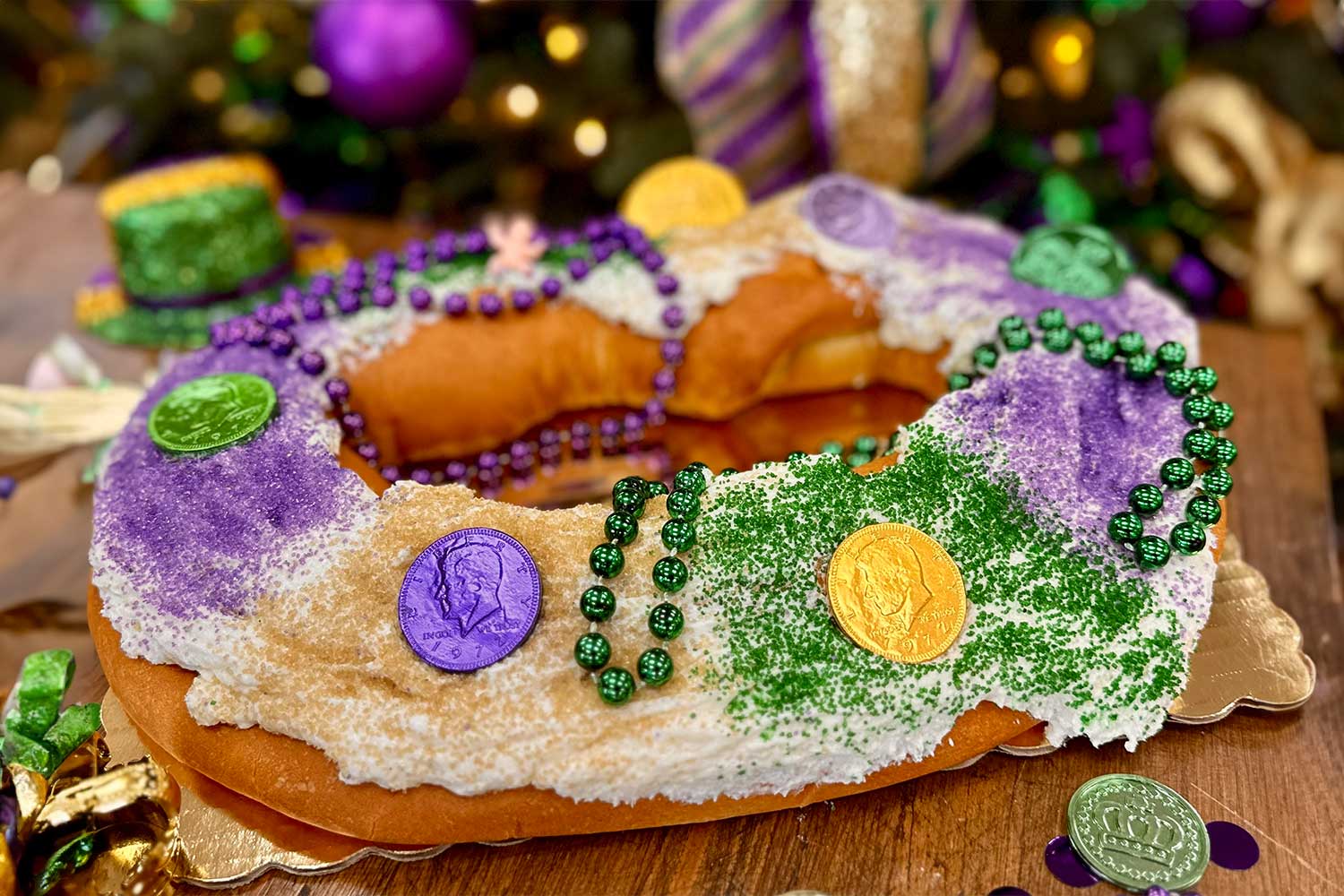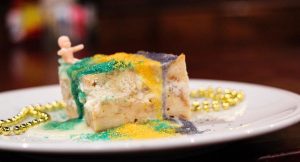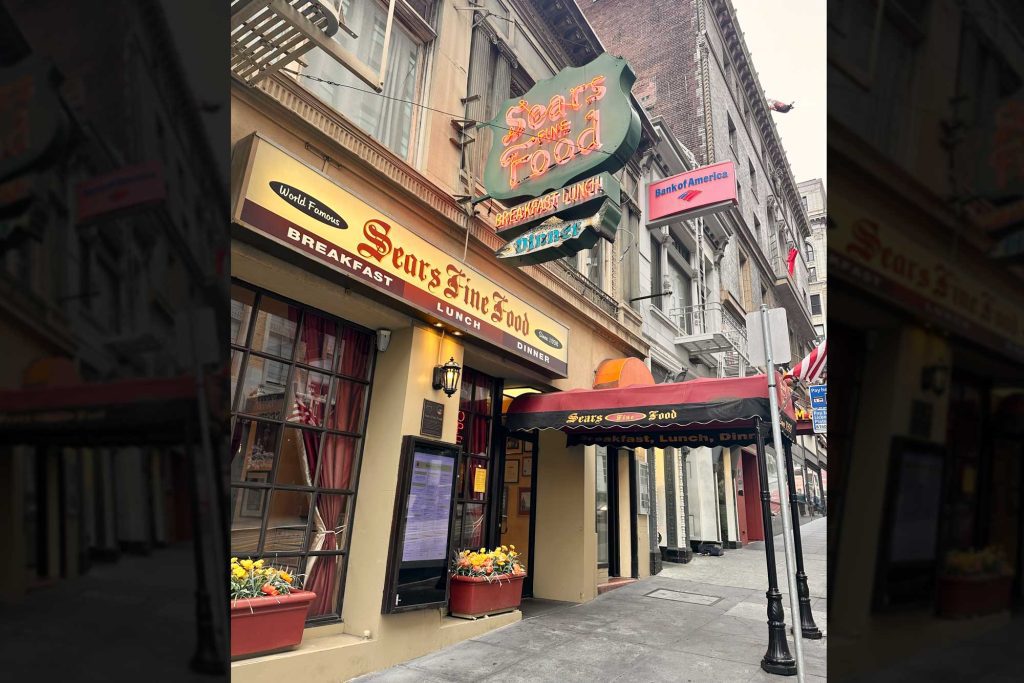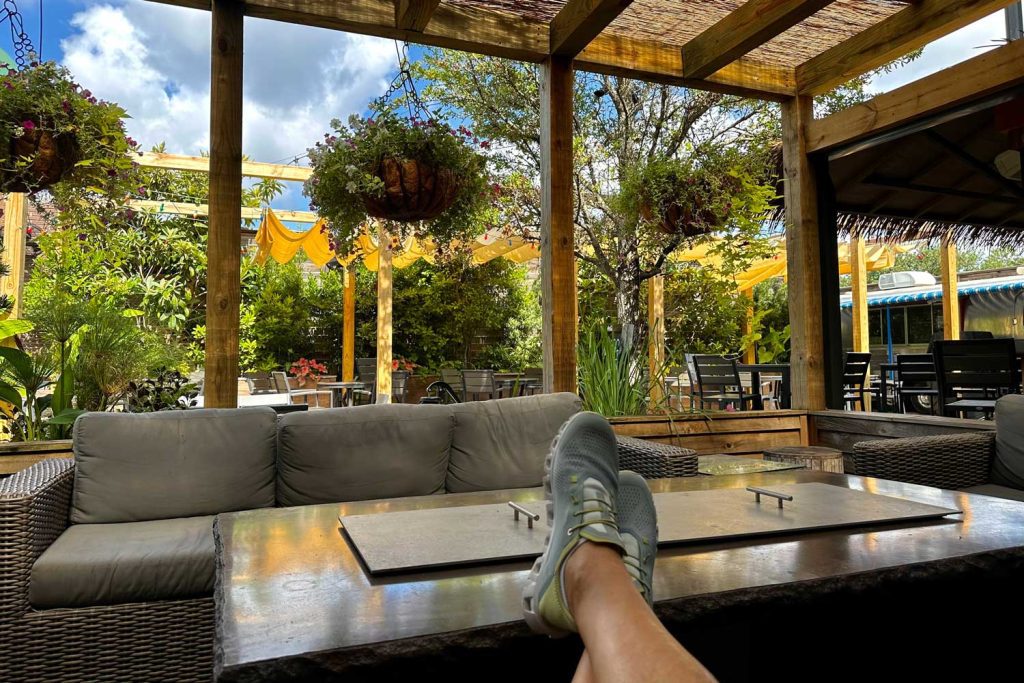It’s king cake season. Those four words don’t carry a lot of weight across 90% of this country. Though in most of Louisiana and the majority of South Mississippi things reach a fever pitch in and around bakeries during this time of year.
There are readers of this weekly column from almost all the 50 states. For those who aren’t familiar with the Mardi Gras staple known as a king cake, here’s a quick primer. The king cake is believed to have first come to Louisiana around 1870. It’s a ring of bread— sometimes braided, many times filled with fruit and/or cream cheese and sometimes spiced with only cinnamon— that is covered with icing or frosting and decorated with the three colors of Mardi Gras, purple, green, and gold. The season runs from January 6th (Epiphany/Twelfth Night signifying the event when the three wisemen/kings brought gifts to the baby Jesus) through Fat Tuesday (the day before Ash Wednesday, the beginning of Lent).
To an outsider the king cake is a puzzling pastry. “What’s up with all the styles and versions?” “Why is there a small baby sitting on top of my cake?” “Why purple, green, and gold?” “What’s up with the knife staying in the box?” “Why are people standing in long lines to get a colored cake?” Most of those questions are answered once one has tried a well-prepared king cake.
Here are some— mostly accurate— explanations.
The answer to the plastic baby is simple— it represents the baby Jesus and is usually on top of the cake these days. For most of king cake history a bean or nice trinket was baked inside the cake for good luck. In the 1950s a New Orleans bakery started putting a small porcelain baby inside of their king cakes. That tradition caught on and most use a baby these days, though the baby is now on top because people were accidentally eating the baby and bakeries didn’t want the hassle of a lawsuit. The baby— agnostics say it’s for luck— is no longer porcelain and made of plastic in some far off factory that must be making millions of them.
There’s also the tradition of whomever gets the baby must buy the next king cake, but now that the baby is on top and not inside, some say it’s there for good luck.
The interwebs are filled with conflicting reasons why the official Mardi Gras colors are purple, green, and gold. You can research it and choose which version you like best. I’m going with purple for justice, green for faith, and gold for power. No emails, please.
For most of my life, I wasn’t a fan of king cake. Most of them are dry, overly sweet, excessively sugared, and often made with fruit fillings from a can. Though for the past several years I have been working on developing and opening a bakery. In this part of the world any respectable bakery should offer king cakes during the Mardi Gras season, therefore my attitudes have changed.
I knew what I liked in a king cake: Soft, eggy, buttery bread, a light fruit and cream cheese filling, very minimal sugar on top, and frosting that is just sweet enough. The problem is that most king cakes don’t fit that description. Most commercial king cakes are the exact opposite— dry, hard bread, overly sweet fillings, and overly sugared toppings with way too much food coloring. Last year I went on a quest to find the perfect king cake. One that we could take inspiration from while developing our version at Loblolly Bakery in Hattiesburg. I spent a day scouring New Orleans for examples. I came home with 32 king cakes from bakeries and stores all over the city.
Evaluating 32 king cakes for specific pros and cons ended up being a lot like judging a chili cookoff. Typically, in chili cookoffs there are two dozen entries with people trying all sorts of crazy ideas with a chili recipe, and one sole entry that actually tastes like chili. Out of the 32 king cakes there were only a few that appealed to my tastes and only one that absolutely nailed it— the celebrated Vietnamese bakehouse on Chef Menteur Highway in New Orleans— Dong Phoung Bakery.
The Dong Phoung king cake is— to this columnist’s taste, along with a majority of the New Orleans contingent— the gold standard when it comes to that particular pastry. Initially, the hype was so overblown I was skeptical. To be honest, during the Great King Cake Quest of 2023, I was hoping I would find a diamond in the rough and a king cake that bested the highly acclaimed and overly lionized cakes that come from Dong Phoung. Though in the end, the clear winner, and the clear winner by far, was the Dong Phoung king cake. It made most all the others pedestrian in texture and taste.
Granted, there were a few that were good, but only one that was exceptional. I traveled down to New Orleans on a follow-up and waited in line at one of the outposts that is lucky enough to receive a small order of Dong Phoung cakes a few times a week to make sure the initial cake wasn’t a fluke. I learned quickly that there is a reason Dong Phoung sells out of king cakes before the season starts and why devotees stand in line for an hour or more to score one. It’s that good.
So, when pastry chef Martha Foose and her husband, head baker, Donald Bender, and I— the Loblolly brain trust such as it is— began discussing what our king cake would be, there was one clear example we chose to follow.
Last year during Mardi Gras our bakery hadn’t opened yet and Martha and Donald baked king cakes in the kitchen at The Midtowner in a basic convection oven. We brought them to Crescent City Grill to sell and they usually sold out within 10-15 minutes.
This year the bakery is open and firing on all cylinders. We have the proper equipment and the proper space to bake our version of the perfect king cake. After a couple of trial runs and false starts, the baking team nailed it a few days into the season. The king cakes we are baking in the Loblolly kitchen these days are— to my taste— perfect.
The Loblolly king cake is a soft, eggy, buttery brioche-like bread with a very subtle Ermine frosting that is just sweet enough. We decided to focus on four flavors instead of offering dozens of alternatives. We committed our team to focus only on those four varieties and do them perfectly— Classic French Quarter Spice (cinnamon, allspice, nutmeg, etc), Hometown Blueberry-Cream Cheese, Praline-Pecan (with dolce de leche and cream cheese) and Traditional Cream Cheese.
So far, a little over a week into the season, demand is far outpacing supply. Our small team is baking all night and pumping out as many as they can. Our focus is on quality, not quantity. That’s just not some PR mantra that we say to paint a pretty picture. It’s how we truly feel. I would rather miss out on thousands of dollars of sales serving a handmade product I am proud of— and I am very, very proud of our king cakes— than to pump out a large volume of overly sweet, dry, institutional cakes that are lesser products.
When I first got into this business, I never would have seen myself owning and operating a business that baked and sold king cakes. As I stated earlier, I wasn’t even a fan of king cakes. But 90% of what I have done over the last 37 years hasn’t been planned. My original goal was to own one restaurant so I could wear shorts and t-shirts to work every day. I had no ambition greater than that. It just goes to show when we open ourselves to opportunities magic can happen.
Are king cakes magical? No. But the buzz around them is sweet (pun intended). In the end it’s about doing the work one loves and of which he or she can be proud.
Onward.




